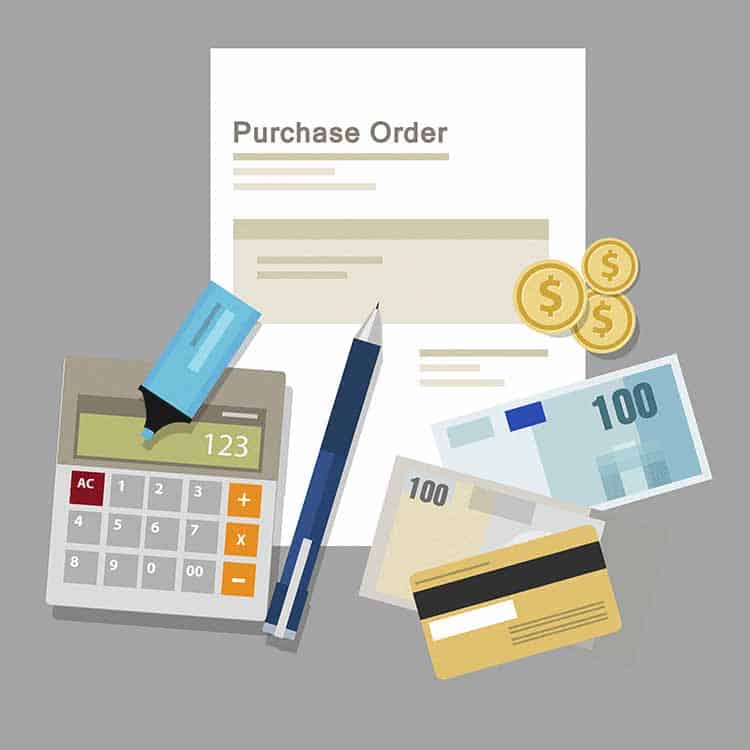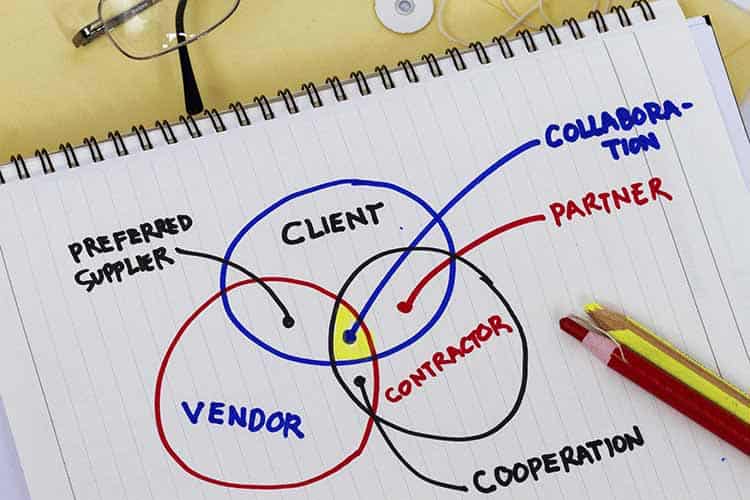-
10 Important Ways That Using Purchase Orders Benefits Your Company
If you’re like most of us, you probably think the last thing your business needs is more paperwork. There’s way too much of that already, right? Not using purchase orders is saving you time, you might argue. Besides that, they seem redundant. Why would you need another document that says the same thing an invoice does?
I know it can seem like all the documents, files, and records just make things more complicated. But purchase orders aren’t a useless document. In fact, rather than making things more complicated, using purchase orders can simplify your workflow.
Purchase orders are a key aspect of maintaining accurate, complete financial records. They might seem like just an extra piece of accounting paperwork, but knowing when and how to use them has far-reaching business benefits.
Whether you’re running a small business or handling purchasing for a larger organization, the right purchase order system can make a huge difference in how well the purchasing process works in your company. Keep reading to discover 10 reasons why it’s a good idea to use purchase orders and to learn how much they can benefit your company.

1) Save Time
Taking a few extra minutes to generate purchase orders (POs) saves time in the long-run. Firstly, an established purchase order system simplifies the ordering process by using features like a punch out catalog and item catalog.
Once you’ve set up the system it’s very easy to go in, find products approved for purchase, and place an order. For routine purchases, generating a PO happens automatically. And even for new orders, the extensive automation streamlines PO creation and order placement.
You’ll also save time when orders arrive since all you have to do is check the invoice against the purchase order to make sure the order is correct. The system puts all the purchasing records you need right at your fingertips.
2) Help With Budgeting
If you’re planning a large project, purchase orders can help with budgeting. In order to generate accurate POs, you’ll have to calculate order quantities before the project begins. That also helps you get a better idea of how much to budget for the project.
Purchase orders don’t just help with big projects, though. Even when dealing with every-day purchases that come up in running the business, the price and quantity fields on purchase orders give you clues about how much your company needs to sell to make a profit.
It’s also helpful for budgeting purposes to be able to look back on past records of purchases. You’ll be better equipped to plan future budgets if you can easily look at records of how much you spent in the past.
3) Enable Planning
Careful purchasing records help you anticipate and plan for the future. They provide key insight into company performance, which gives you the tools you need to examine product trends, market cycles, and company spending.
Most purchase order systems will generate this information automatically. But not all of them are equally good at making the data easy to access. You’ll need a system that is also good at managing digital documents.
NextProcess’ procurement system automatically saves all purchasing information. Standard and custom reporting provides detailed insight into important data. Plus, the system stores all this information in a way that’s easy to access. This lets you review detailed records as well as track budgets, receipts, invoices, and more.
4) Handle Unexpected Expenses
Using purchase orders can act as an early warning system for unanticipated expenses. Because everyone has to submit a PO for most purchases, there’s a record of any expense as soon as the need for it arises.
Imagine a situation where one department has a large expense come up that they hadn’t planned for. They place an order, and then accounts payable doesn’t hear about it until they get the invoice. At that point, there’s a lengthy approval process to go through as AP tries to figure out where this unexpected expense came from and whether or not it should have been authorized.
Having a purchase order system brings upcoming expenses to light earlier. This helps with budgeting, planning, and communication between departments.
5) Eliminate Goof-Ups
Purchase orders provide a record of exactly what you ordered and at what price to clearly communicate all the details of a purchase. Having documentation like this protects you from any mix-up when ordering, such as someone misinterpreting an order placed the phone.
Your team can reference POs any time there’s a disagreement about what was or should have been ordered. Having this documentation gives you an important tool for fixing goof-ups that happen within your organization as well as problems that come up between you and your suppliers.

6) Provide Legal Protection
Purchase orders act as a legal document. Having a written agreement regarding the prices and quantity of items in your order protects both you and the seller.
Purchase orders protect you by giving you a legal, enforceable record of exactly what you ordered. It also guards your company against unexpected price increases. If you receive the wrong quantity or type of items, or if you’re charged the wrong amount, you can go back to the purchase order to help resolve the issue.
POs also protect the seller, and that’s something they’ll appreciate. For example, if someone in your company didn’t remember how many items they ordered, they might incorrectly complain about an order received. Having purchase order documents lets you quickly answer the question of how much was ordered and resolve potential issues before they damage your relationship with a valued supplier.
7) Control Spending
Implementing a purchase order system lets you control who is allowed to make purchases. By choosing who can access the purchasing system, you’ll prevent unauthorized people from placing orders without clearance.
Setting up automatically enforced policies is a big step toward curtailing maverick spend. The system can also limit which items are purchased from which vendor to make sure employees are placing orders from preferred suppliers.
NextProcess’s procurement system offers extensive customization, letting you limit your employees’ purchases company-wide or to certain items per vendor. As an added bonus, we don’t charge for additional users. You can give as many (or as few) employees as you want access to the purchasing system at no additional cost.
8) Track Spending
With an automated system keeping all your purchasing information in one easy-to-search place, it’s simple to track where the money is going. In addition, the NextProcess system updates in real-time so you can always see exactly what purchases have been made.
Our Software-as-a-Service system lets you set up email notifications to alert you about important details. And because it’s a cloud-based system, you can login and access details about the current state of purchasing from any device with internet access. You’ll also have ready access to information about past purchases.
9) Understand Vendors
Setting up a purchase order system gives you the tools needed to keep track of your vendors and suppliers. You’ll be able to easily store and sort information about vendors, as well as set up policies about which items should be ordered from each vendor.
The documentation that purchase orders provide also give you insight into which vendors are easy to work with and which ones are not. A purchasing system makes it easy to see if your vendors fill orders accurately and on time or if they’re behind schedule and prone to mistakes.
That helps you catch poor vendors early and prioritize working with the vendors who are good for your company. Ideally, you should only be working with vendors and suppliers who follow your compliance policy and add value to your company.
10) Improve Inventory Management
Making a purchase is the first step in procuring inventory. And when you have an easy-to-use purchase order system, it helps with inventory management.
Purchase orders help you keep track of what products should be arriving at your company. You can then match them against the invoices to check for accuracy, so you know exactly what’s happening with your incoming inventory.
In addition, you can go one step further and implement 3-way matching. To do this, create a Goods Received (GR) document that lists all the products received in an order. Then your accounting department can make sure that the PO, invoice, and GR all match before they approve final payment.
So there you have it – 10 important ways that using purchase orders benefits your company. If you’re ready to start putting purchase orders to work for you, NextProcess can help. Just contact us today to request a demo or more information. We’ll be happy to give you a first-hand look at how our purchase order system can work for your business before you commit to a purchase. And if you do decide to get your purchase order system from us, we’ll be right there helping you through the entire setup process to make sure you get all the benefits that automated purchasing can provide.